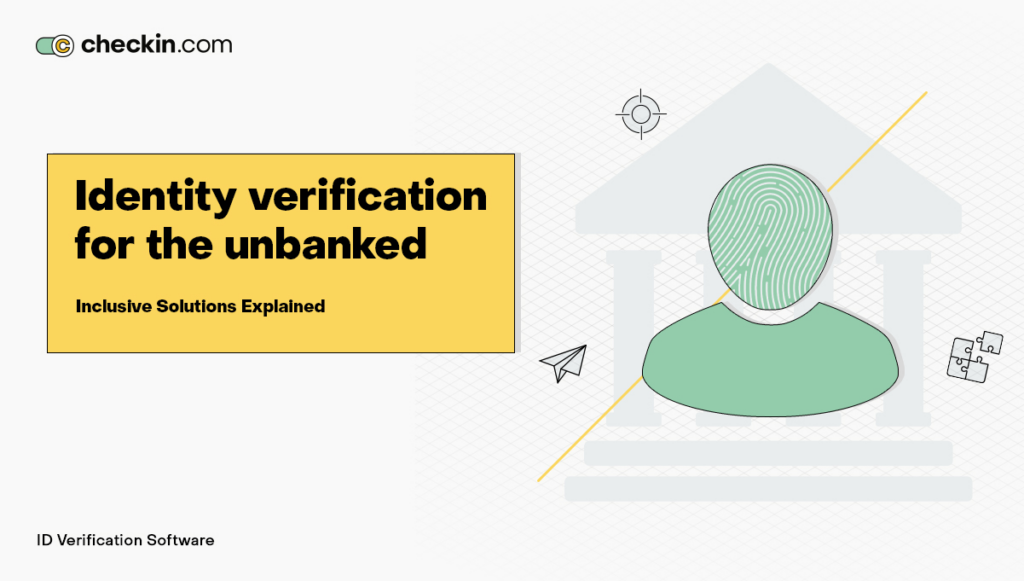In today’s digital age, id verification service is a crucial aspect of accessing various services and participating in the modern economy. However, a significant portion of the global population, known as the unbanked, faces challenges in verifying their identities due to the lack of traditional forms of identification and bank accounts.
This article delves into the concept of identity verification for the unbanked, explores the unique challenges they encounter, and highlights the emerging solutions designed to address these issues, fostering inclusivity and enabling access to essential services.
Understanding the Unbanked Population
The unbanked population comprises individuals who do not have access to formal banking services or conventional financial institutions. This segment of the population, which spans across regions and countries, relies primarily on cash transactions and informal financial systems to meet their financial needs.
Challenges in Identity Verification for the Unbanked
Identity verification poses significant challenges for the unbanked due to the absence of traditional identification documents and bank accounts.
Many existing verification processes heavily depend on official identification papers and financial records, making it difficult for the unbanked to fully participate in the digital economy and access vital services such as healthcare, education, and financial products.
Innovative Solutions for Identity Verification
Fortunately, innovative service providers have recognized the need to develop inclusive solutions that cater to the specific requirements of the unbanked population. These solutions leverage cutting-edge technologies and alternative data sources to verify identities effectively. Here are a few notable examples:
- Biometric Identification: Biometric technology, such as fingerprint or iris scanning, offers a secure and accessible way to verify identities without relying on traditional documents. By capturing unique physical characteristics, biometric identification provides reliable and inclusive verification for individuals without formal identification papers.
- Social Network Analysis: Some service providers utilize social network analysis techniques to establish trust and verify identities within close-knit communities. By analyzing social connections and relationships, these solutions can validate an individual’s identity based on the trust network they belong to, facilitating secure verification in the absence of traditional documents.
The Benefits of Identity Verification for the Unbanked
Identity verification solutions tailored for the unbanked population offer numerous benefits that contribute to financial inclusion and empowerment. Here are some key advantages:
- Access to Essential Services: Identity verification enables the unbanked to access vital services such as healthcare, education, government assistance programs, and financial products. By providing a reliable and secure means of identification, these individuals can overcome barriers and enjoy the same opportunities as those with traditional forms of identification.
- Enhanced Security and Fraud Prevention: Robust identity verification processes significantly reduce the risk of identity theft and fraudulent activities. By implementing innovative technologies and data analysis techniques, service providers can identify potential risks and ensure the integrity of the verification process, safeguarding the interests of both service providers and users.
Overcoming Challenges and Driving Inclusion
While identity verification for the unbanked presents unique challenges, there are promising initiatives and strategies to overcome these obstacles and promote inclusion. Here are some key approaches:
- Collaborative Efforts: Governments, financial institutions, and technology providers need to collaborate closely to develop comprehensive solutions that address the specific challenges faced by the unbanked. By working together, they can leverage their expertise and resources to create innovative approaches that bridge the identity verification gap.
- Leveraging Mobile Technology: Mobile phones have become ubiquitous, even among the unbanked population. Leveraging mobile technology and smartphone penetration, service providers can offer mobile-based identity verification solutions that are accessible and user-friendly. This approach takes advantage of the widespread availability of mobile devices to reach individuals who may lack access to traditional banking services.
Conclusion
Identity verification for the unbanked is a crucial aspect of promoting financial inclusion and ensuring access to essential services for all individuals, regardless of their traditional identification or banking status.
Through the utilization of innovative technologies such as biometrics and social network analysis, service providers are revolutionizing the identity verification landscape, bridging the gap and creating more inclusive solutions.
By embracing these advancements, we move closer to a society where everyone has the opportunity to participate fully in the digital economy. The future of identity verification lies in the development of solutions that prioritize inclusivity, security, and accessibility for the unbanked population.
[postbanner]
FAQ
How secure are these alternative identity verification methods?
Alternative identity verification methods prioritize security and privacy. Biometric identification systems employ robust encryption and stringent security measures to protect personal data. Social network analysis and other innovative solutions also implement advanced security protocols, ensuring secure and reliable identity verification for the unbanked population.
Can identity verification for the unbanked help combat fraud?
Yes, identity verification solutions for the unbanked incorporate advanced algorithms and data analysis techniques to detect patterns and anomalies that may indicate fraudulent activities. By leveraging technology, these solutions contribute to fraud prevention and risk mitigation, enhancing overall security in the verification process.


